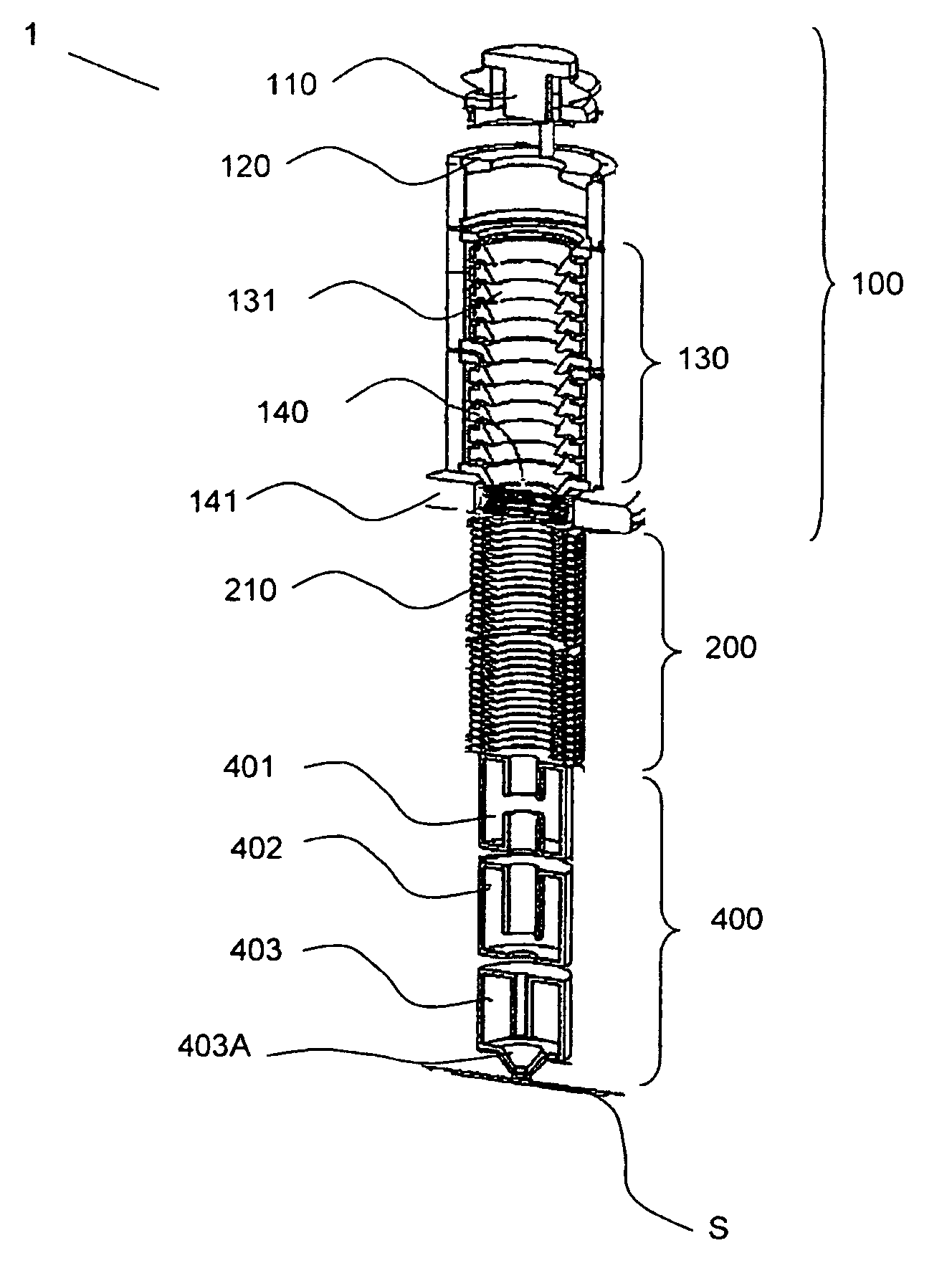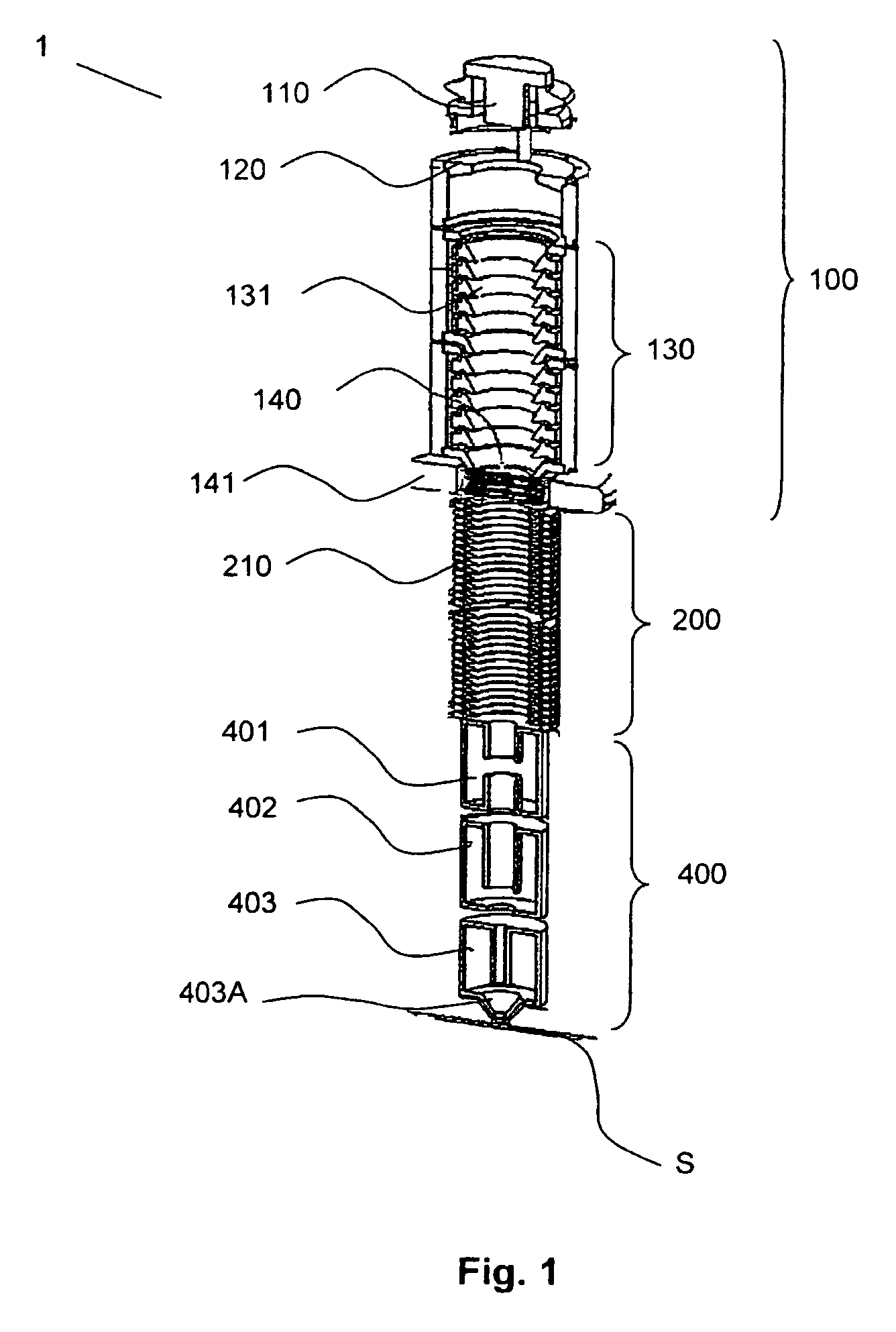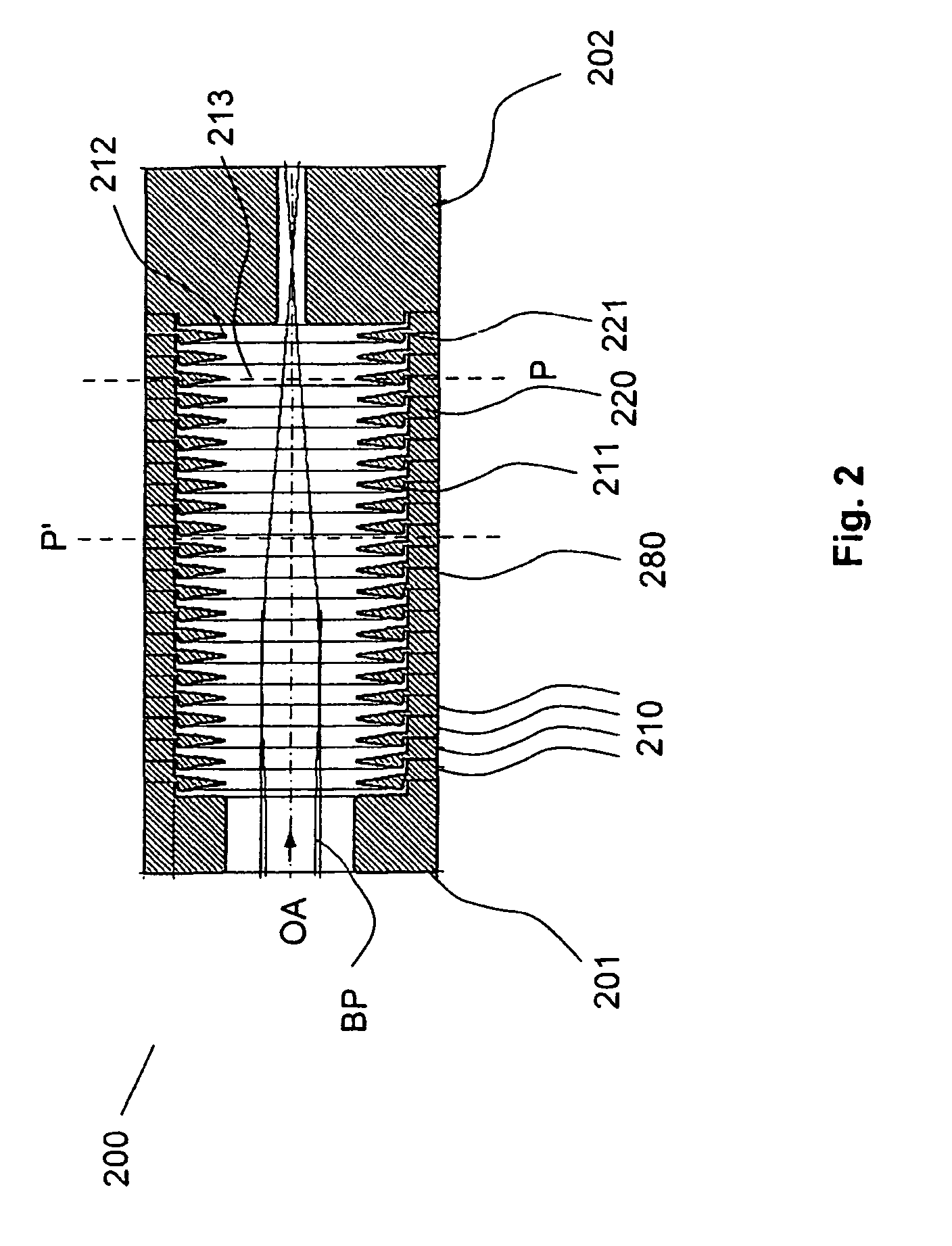Particle-optical system
a particle-optical and multi-column technology, applied in the field of multi-beamlet multi-column particle-optical systems, can solve problems such as deteriorating imaging performance, and achieve the effects of reducing heat and/or charge accumulation, uniform and more precise machining, and enhancing adhesion of thin films
- Summary
- Abstract
- Description
- Claims
- Application Information
AI Technical Summary
Benefits of technology
Problems solved by technology
Method used
Image
Examples
Embodiment Construction
[0062]In FIG. 1, particle-optical components of an embodiment of multi-beamlet particle-optical column 1 for use in a multi-column, multi-beamlet particle-optical system according to the present invention are illustrated. In the depicted embodiment, column 1 comprises, in a direction in which the charged particles would generally travel, a beamlet generating arrangement 100, electrostatic lens 200 and electromagnetic focussing lens arrangement 400. Beamlet generating arrangement 100 comprises charged particle source 110, extraction system 120 and condenser lens 130. The condenser lens 130 comprises a stack of electrodes 131. The beamlet generating system further comprises beam-patterning structure 141 held by a mounting frame 141. The beam patterning structure 141 generally comprises a multi-aperture plate, and may be a blanking aperture array, for instance, as described above. The electrostatic lens arrangement 200 comprises a plurality of electrode elements 210 which are arranged ...
PUM
| Property | Measurement | Unit |
|---|---|---|
| distance | aaaaa | aaaaa |
| distance | aaaaa | aaaaa |
| distance | aaaaa | aaaaa |
Abstract
Description
Claims
Application Information
 Login to View More
Login to View More - R&D
- Intellectual Property
- Life Sciences
- Materials
- Tech Scout
- Unparalleled Data Quality
- Higher Quality Content
- 60% Fewer Hallucinations
Browse by: Latest US Patents, China's latest patents, Technical Efficacy Thesaurus, Application Domain, Technology Topic, Popular Technical Reports.
© 2025 PatSnap. All rights reserved.Legal|Privacy policy|Modern Slavery Act Transparency Statement|Sitemap|About US| Contact US: help@patsnap.com



